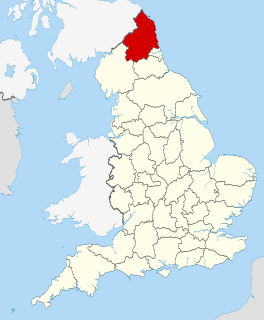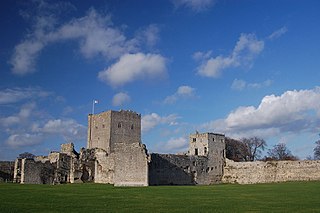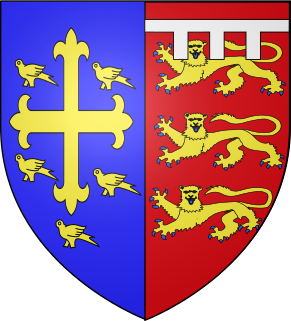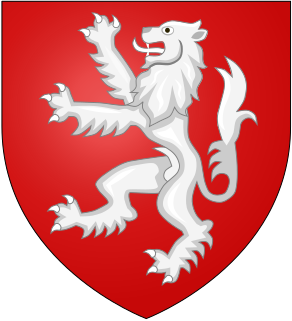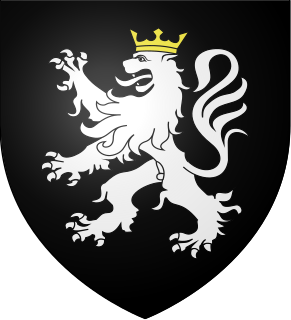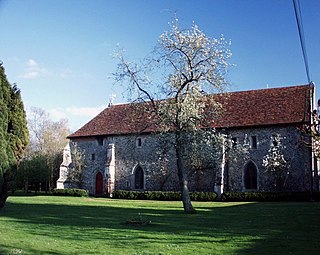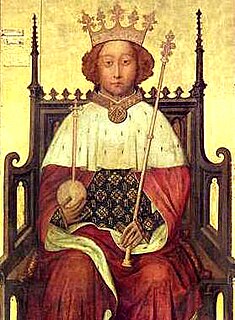
Sir Henry Percy KG, commonly known as Sir Harry Hotspur, or simply Hotspur, was a late-medieval English nobleman. He was a significant captain during the Anglo-Scottish wars. He later led successive rebellions against Henry IV of England and was slain at the Battle of Shrewsbury in 1403 at the height of his career.

Richard of Conisburgh, 3rd Earl of Cambridge was the second son of Edmund of Langley, 1st Duke of York, and Isabella of Castile. He was beheaded for his part in the Southampton Plot, a conspiracy against King Henry V. He was the father of Richard Plantagenet, 3rd Duke of York, and the grandfather of King Edward IV and King Richard III.

Anne de Mortimer, Countess of Cambridge, was the mother of Richard of York, 3rd Duke of York, and the grandmother of King Edward IV and King Richard III.

Roger de Mortimer, 4th Earl of March and 6th Earl of Ulster was an English nobleman. He was considered the heir presumptive to King Richard II after the death in 1382 of his mother Philippa of Clarence until his own death in 1398.
Constance of York, Countess of Gloucester was the only daughter of Edmund of Langley, 1st Duke of York and his wife Isabella of Castile, daughter of King Peter of Castile and his favourite mistress, María de Padilla.

Henry Scrope, 3rd Baron Scrope of Masham KG, a favourite of King Henry V, was beheaded on 5 August 1415 for his involvement in the Southampton Plot.

Isabella of Castile, Duchess of York was the daughter of King Peter and his mistress María de Padilla. She accompanied her elder sister, Constance, to England after Constance's marriage to John of Gaunt, 1st Duke of Lancaster, and married Gaunt's younger brother, Edmund of Langley, 1st Duke of York.

Isabel of Cambridge, Countess of Essex was the only daughter of Richard, 3rd Earl of Cambridge and Anne Mortimer. She was the sister of Richard Plantagenet, 3rd Duke of York, and like him a great-grandchild of Edward III of England.
William Grey was a medieval English churchman, academic, and Lord High Treasurer. He served as Chancellor of Oxford University and as Bishop of Ely.

Richard de Vere, 11th Earl of OxfordKG was the son and heir of Aubrey de Vere, 10th Earl of Oxford. He took part in the trial of Richard, Earl of Cambridge and Lord Scrope for their part in the Southampton Plot, and was one of the commanders at Agincourt in 1415.
Alianore Holland, Countess of March was the eldest daughter of Thomas Holland, 2nd Earl of Kent, and the wife of Roger Mortimer, 4th Earl of March, heir presumptive to her uncle, King Richard II. Through her daughter, Anne Mortimer, she was the great-grandmother of the Yorkist kings Edward IV and Richard III. She was Governess to Queen consort Isabella of Valois.
Richard le Scrope, Bishop of Lichfield and Archbishop of York, was executed in 1405 for his participation in the Northern Rising against King Henry IV.

Sir Edward Courtenay was the eldest son of Edward de Courtenay, 11th Earl of Devon. He fought at Agincourt, and was killed in a sea battle in Henry V's continuing campaigns in Normandy.

Heaton Castle in the parish of Cornhill-on-Tweed, Northumberland, England, is a ruined historic castle near the Scottish border.

